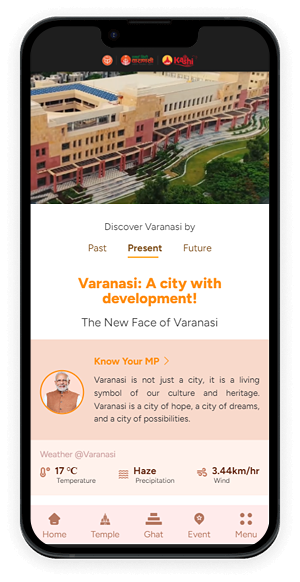मान मंदिर घाट के बारे में
Most people walk past this ghat not knowing what’s above it. But if you pause and look up, you’ll see a sandstone palace, quietly watching over the Ganga. That’s the Man Mandir Palace, built by Raja Sawai Man Singh of Amber in the 16th century.
Now here’s where it gets fascinating — tucked inside the palace is an ancient observatory. Long before modern telescopes, this was where the sky was read with stone and shadow. Raja Jai Singh II, the great Rajput astronomer-king, added the instruments in the 1700s. The same Jai Singh who built observatories in Delhi, Jaipur, Ujjain, and Mathura. Up on that terrace, you’ll find massive yantras — like the Samrat Yantra for measuring time, the Jai Prakash Yantra for tracking stars, and the Nadivalaya to understand the movement of the sun. No lenses. No electricity. Just geometry, precision, and sky.
And perhaps what’s most remarkable — is the thought that astronomy here wasn’t separate from devotion. In Kashi, mapping the heavens was another way to understand the divine. The rishis looked upward, not just for science, but for meaning.
So the next time you’re at Man Mandir Ghat, don’t just look at the river. Look up. That quiet palace holds the memory of a time when kings studied the cosmos — and temples and telescopes stood side by side.
This place is now home to a highly modern virtual experience museum, taking us back to a time when science and faith coexisted.







